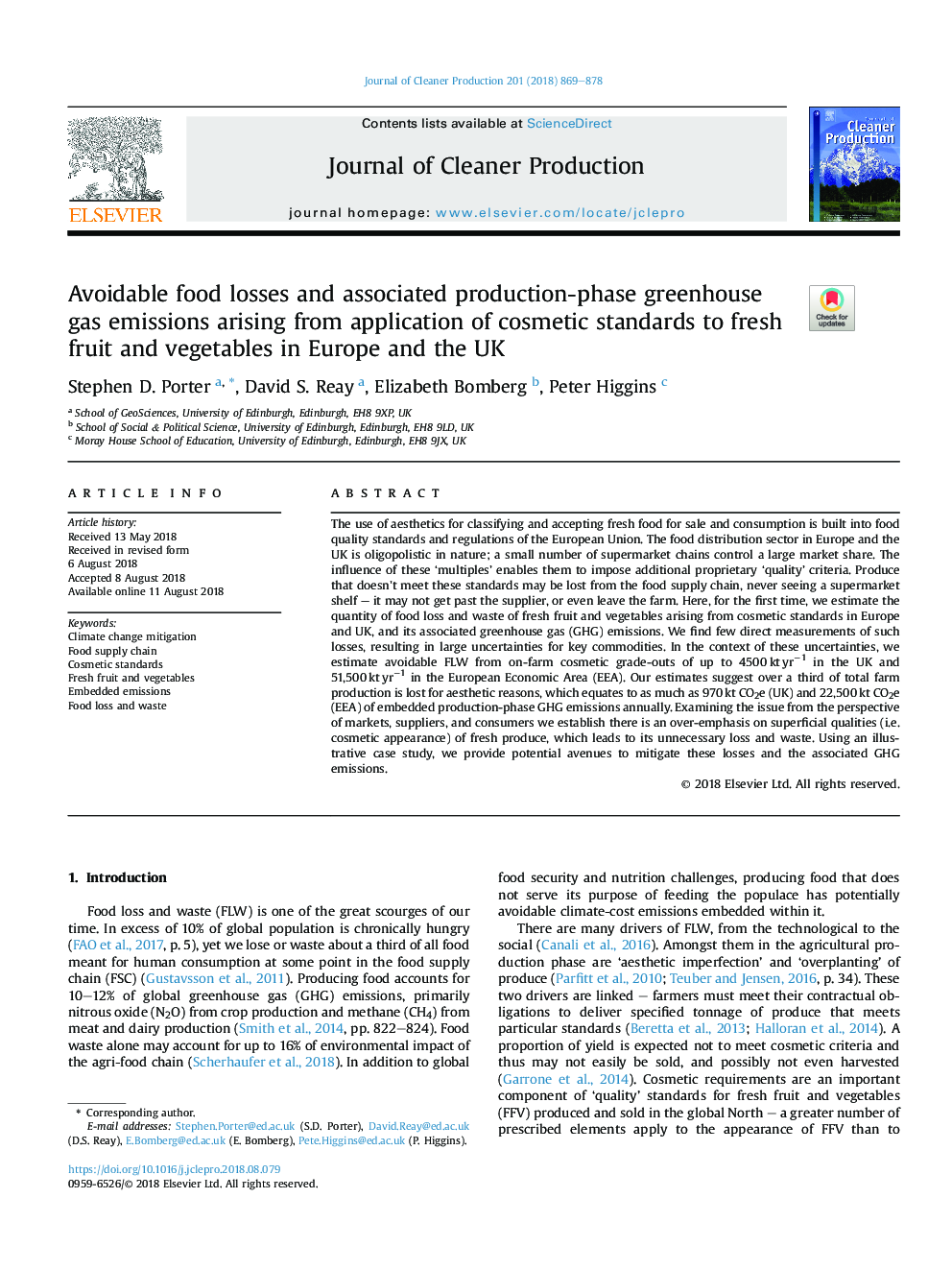| Article ID | Journal | Published Year | Pages | File Type |
|---|---|---|---|---|
| 8092897 | Journal of Cleaner Production | 2018 | 10 Pages |
Abstract
The use of aesthetics for classifying and accepting fresh food for sale and consumption is built into food quality standards and regulations of the European Union. The food distribution sector in Europe and the UK is oligopolistic in nature; a small number of supermarket chains control a large market share. The influence of these 'multiples' enables them to impose additional proprietary 'quality' criteria. Produce that doesn't meet these standards may be lost from the food supply chain, never seeing a supermarket shelf - it may not get past the supplier, or even leave the farm. Here, for the first time, we estimate the quantity of food loss and waste of fresh fruit and vegetables arising from cosmetic standards in Europe and UK, and its associated greenhouse gas (GHG) emissions. We find few direct measurements of such losses, resulting in large uncertainties for key commodities. In the context of these uncertainties, we estimate avoidable FLW from on-farm cosmetic grade-outs of up to 4500â¯ktâ¯yrâ1 in the UK and 51,500â¯ktâ¯yrâ1 in the European Economic Area (EEA). Our estimates suggest over a third of total farm production is lost for aesthetic reasons, which equates to as much as 970â¯kt CO2e (UK) and 22,500â¯kt CO2e (EEA) of embedded production-phase GHG emissions annually. Examining the issue from the perspective of markets, suppliers, and consumers we establish there is an over-emphasis on superficial qualities (i.e. cosmetic appearance) of fresh produce, which leads to its unnecessary loss and waste. Using an illustrative case study, we provide potential avenues to mitigate these losses and the associated GHG emissions.
Related Topics
Physical Sciences and Engineering
Energy
Renewable Energy, Sustainability and the Environment
Authors
Stephen D. Porter, David S. Reay, Elizabeth Bomberg, Peter Higgins,
